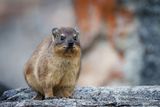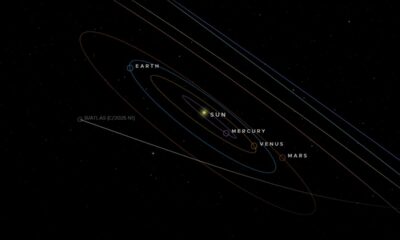Science
Fossilized Butt-Drag Track Discovered in South Africa’s History

A remarkable paleontological discovery has emerged from South Africa: a 126,000-year-old buttock-drag track attributed to a rock hyrax. This groundbreaking finding, detailed in a recent study published in the journal Ichnos, marks the first instance of fossilized butt-dragging evidence ever identified on Earth.
Rock hyraxes, also known as “dassies,” are small, herbivorous mammals native to Africa and the Arabian Peninsula. Their unique behavior, including scooting along surfaces, has rarely been documented in the fossil record. The authors of the study noted, “To the best of our knowledge, buttock-drag features have until now not been reported in the paleoichnology record. If our tentative interpretation is accurate, this would therefore form the first fossilized buttock-drag trace to be reported.”
Uncovering the Fossil Evidence
The butt-drag track was found in the Bosbokfontein Private Nature Reserve, situated along a once-sandy area now solidified into rock by wind action. Researchers identified a 37-inch linear feature in a block of aeolianite, which fell from a cliffside, as the track left by the rock hyrax. This unique formation provides insight into the creature’s movement and behavior.
Although rock hyraxes typically inhabit rocky terrains, they occasionally venture onto sandy surfaces, which contributed to the preservation of this track. Their short stature, characterized by little legs and thick bodies, results in noticeable ground impressions during activities like scooting. Similar to the behavior observed in domesticated dogs, this scooting action leaves distinctive traces on the surface, which can eventually become fossilized.
The Significance of Ichnology
The research team specializes in ichnology, a branch of paleontology focused on trace fossils—indirect evidence of past life such as tracks, trails, and feeding marks. These fossils provide valuable insights into the behavior and environmental interactions of ancient species. The rock hyrax, despite leaving limited direct evidence of its existence, is known for creating many trace fossils, including polished stones and urine deposits that can solidify into rock-like formations.
The authors highlighted the importance of hyrax traces, stating, “Hyrax traces form an important, unusual, and unique part of the trace fossil record, while highlighting the notion of the Afrotheria.” This discovery encourages further exploration for similar examples across the African continent, emphasizing the potential for uncovering additional fossilized evidence of these creatures.
The research team remains committed to locating more rock hyrax butt-drag tracks, hoping that this discovery will inspire further studies on trace fossils. The significance of this finding extends beyond mere curiosity; it underscores the intricate connections between past life and the environments they inhabited.
The groundbreaking nature of this discovery not only provides a new perspective on rock hyrax behavior but also enriches our understanding of trace fossil studies.
-

 Technology5 months ago
Technology5 months agoDiscover the Top 10 Calorie Counting Apps of 2025
-

 Technology3 weeks ago
Technology3 weeks agoOpenAI to Implement Age Verification for ChatGPT by December 2025
-

 Health3 months ago
Health3 months agoBella Hadid Shares Health Update After Treatment for Lyme Disease
-

 Health3 months ago
Health3 months agoAnalysts Project Stronger Growth for Apple’s iPhone 17 Lineup
-

 Health3 months ago
Health3 months agoErin Bates Shares Recovery Update Following Sepsis Complications
-

 Technology5 months ago
Technology5 months agoDiscover How to Reverse Image Search Using ChatGPT Effortlessly
-

 Technology3 months ago
Technology3 months agoElectric Moto Influencer Surronster Arrested in Tijuana
-

 Technology2 months ago
Technology2 months agoDiscover 2025’s Top GPUs for Exceptional 4K Gaming Performance
-

 Technology5 months ago
Technology5 months agoMeta Initiates $60B AI Data Center Expansion, Starting in Ohio
-

 Technology5 months ago
Technology5 months agoRecovering a Suspended TikTok Account: A Step-by-Step Guide
-

 Health5 months ago
Health5 months agoTested: Rab Firewall Mountain Jacket Survives Harsh Conditions
-

 Lifestyle5 months ago
Lifestyle5 months agoBelton Family Reunites After Daughter Survives Hill Country Floods




















